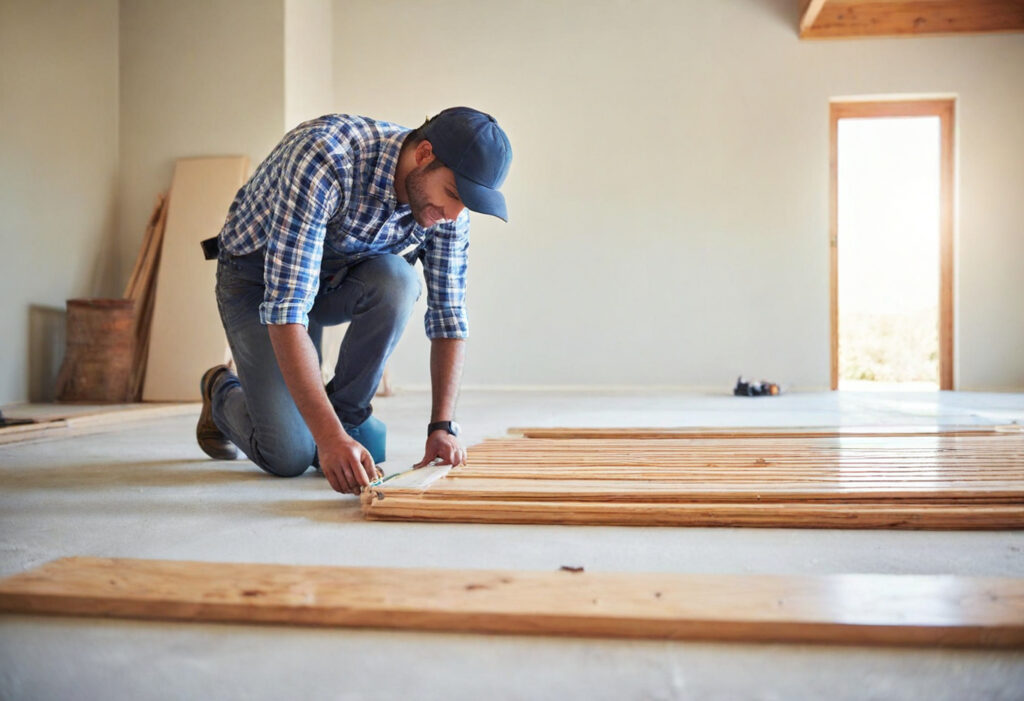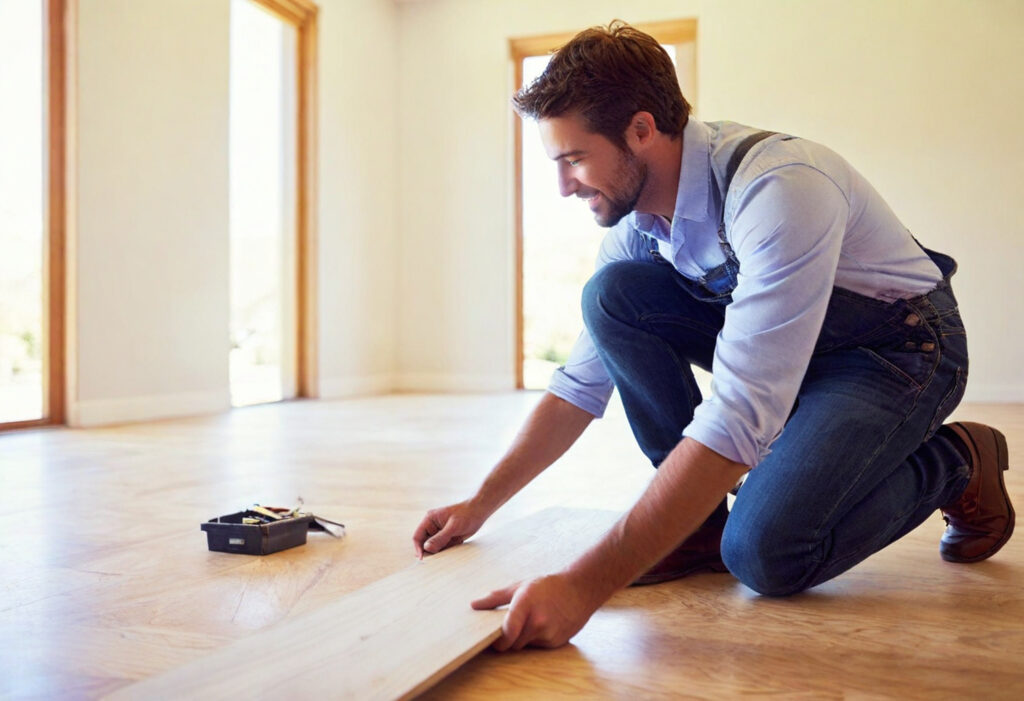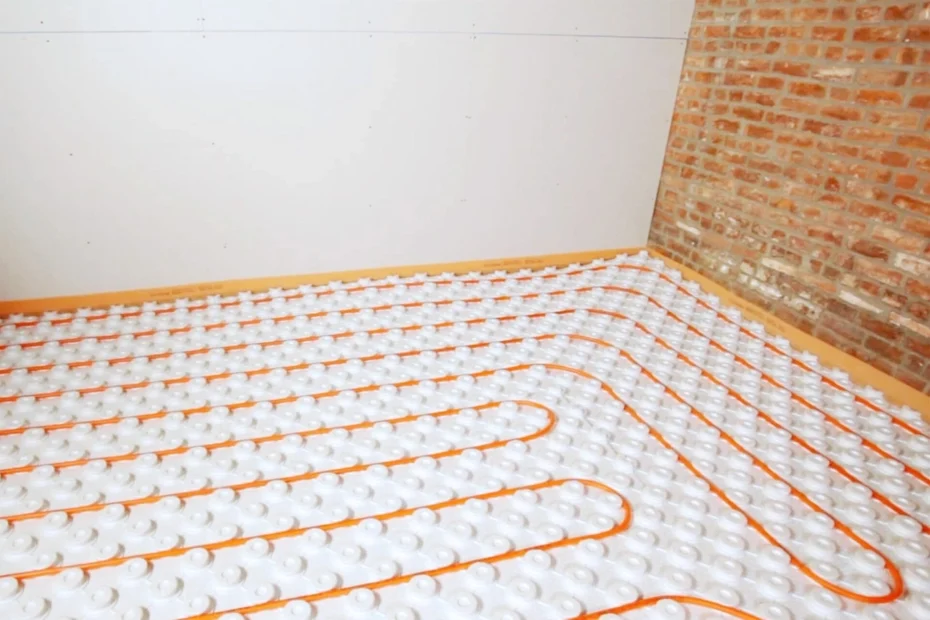My research into heated floor costs for home renovation revealed surprising price differences. Several contractor quotes showed that heated floor installation costs ranged from $6 to $20 per square foot. The systems varied widely in price, from $1.10 to $20 per square foot.
The cost estimate for my 2,400-square-foot home’s heating system stunned me. A hydronic system would cost between $14,000 and $48,000. Most homeowners heat specific areas to manage costs better. A basic 50-square-foot bathroom installation can cost as little as $265. The price for a larger 120-square-foot master bathroom typically falls between $590 and $833. My heated floor installation came with its share of mistakes that got pricey. I wish someone had warned me earlier.
Let me share my experience about the true cost and help you avoid the installation mistakes I made.
Understanding Heated Floors Before Installation
My research into heated floors helped me understand what I was getting into. The technology has evolved significantly since its origins in ancient Rome, where heat from fires spread through tunnels beneath stone floors.
What is radiant floor heating?
Radiant floor heating warms your space from the ground up instead of pushing hot air through vents. The system heats your floor directly, which then radiates throughout the room through infrared radiation. Unlike traditional heating methods that warm the air, radiant heat targets people and objects directly. This creates an even temperature distribution with no cold spots. The system works better than baseboard heating and usually outperforms forced-air systems because it eliminates duct losses. People with allergies prefer this option since it doesn’t stir up allergens like forced air systems.
Electric vs. hydronic systems
You’ll find two main types of radiant floor heating systems:
Electric systems use heating cables or mats under the floor that generate heat through electrical resistance. These systems are easier to install and work great for smaller areas or when you need to modernize. They heat up fast (usually 30-50 minutes) and suit single rooms like bathrooms or kitchens perfectly. The original cost stays lower, but running costs are higher due to electricity prices.
Hydronic systems move hot water through plastic tubing under the floor. Though installation is more complex, these systems save money when heating larger areas or entire homes. They can use different heat sources, including gas or oil-fired boilers, wood-fired boilers, solar water heaters, or combinations. Lower operating costs make them ideal for whole-house installations.
Where heated floors work best
Here are the rooms that benefit most from radiant floor heating:
- Bathrooms – No more cold tile shock, plus floors stay dry
- Kitchens – Perfect comfort in spaces where traditional heating won’t fit
- Bedrooms – Silent, steady warmth without allergen concerns
- Basements – Great solution for typically chilly lower-level spaces
- Home offices – Create a comfortable, focused environment for better work
Radiant heating performs exceptionally well under tile and stone floors because they conduct heat effectively. The system also works under vinyl, engineered wood, and even some shorter-pile carpets.
True Costs of Heated Floor Installation

I tracked every penny I spent on my heated floor project, and now I can share the actual numbers behind this luxury upgrade. The price ranges caught me off guard, so I broke down all costs to help you plan your budget better.
Heated floor cost per square foot
You’ll find radiant floor heating costs between $6 $20 per square foot, though some systems start at just $1.10 per square foot. My installation came to about $12 per square foot, including materials and labor. The good news is that larger heated areas mean lower costs per square foot.
Cost by system type: electric, hydronic, solar, geothermal
Here’s what different systems will cost you:
- Electric: $8-$15 per square foot, with whole-house systems running $19,000-$36,000
- Hydronic: $6-$20 per square foot, adding up to $14,000-$48,000 for a typical 2,400-square-foot home
- Solar: $18-$25 per square foot, with total setup costs between $8,000-$19,500
- Geothermal: $7-$17 per square foot, plus $15,000-$35,000 for a heat pump setup
- Propane: $6-$18 per square foot, with an extra $2,600 for a water heating tank
Flooring material’s effect on cost
My choice of flooring material affected the final cost a lot. Ceramic tile (which I picked) runs $2-$20 per square foot and works great for heat transfer. Concrete floors with heating cost $15-$30 per square foot, while hardwood or laminate costs $15-$20 per square foot. Vinyl stands out as the cheapest option.
Labor and permit expenses
Labor took up much of my budget. Professional installation runs $4-$10 per square foot. Electricians charge $50-$130 hourly, and plumbers ask for $45-$150 per hour. Permits added $75-$180. Old flooring removal costs $60-$120 hourly plus $100-$600 for cleanup.
Ongoing operational costs
Running costs tell the real story of value over time. Electric systems cost about $0.15-$0.35 per hour, while hydronic systems prove more economical at $0.50-$3.00 daily. My 100-square-foot bathroom’s heating bill comes to $14.05 monthly. These systems cost around $3 daily with continuous use when paired with good insulation and smart thermostats – that’s nowhere near what traditional heating costs.
Mistakes I Made During Installation

My heated floor installation turned into quite a learning experience. I made several mistakes that got pricey and caused unnecessary stress. Better planning would have saved me from these headaches.
Underestimating total project cost
My budget calculations missed the mark completely. Labor costs ran between $10-$20 per square foot, and I needed electrical upgrades too. The permit fees ($75-$180) and old flooring removal costs caught me off guard. Anyone thinking about whole-home installation should be ready to spend $14,000-$48,000 for hydronic systems or $19,000-$36,000 for electric systems.
Choosing the wrong system for my space
I picked an electric system for my whole house, which turned out to be a big mistake. Electric systems work best in smaller areas like bathrooms. Hydronic systems make more sense economically for larger spaces. I found that there was a specific system type needed for different flooring materials, after I had already bought incompatible parts.
Skipping proper subfloor prep
The subfloor preparation was rushed, and I didn’t make sure it was level. My floors now have obvious hot and cold spots. Experts say uneven surfaces can crack tiles and reduce heating efficiency. Proper insulation is a vital part to stop heat from escaping downward.
Not accounting for floor height changes
The system added about half an inch to my floor height, which created issues with doorways and room transitions. Door clearances needed expensive fixes. Electric systems usually add 1/8″ to 1/2″ to floor height, and hydronic systems add even more.
Hiring the wrong contractor
I ended up with a contractor who barely knew about radiant heating. Quality installation needs specialists – you’ll likely need both an electrician and a floor-heating expert. I should have looked up credentials in manufacturer databases and checked reviews on Angie’s List or Porch.com. Professional installation is a vital part since DIY mistakes can increase costs a lot later.
What I’d Do Differently Next Time
My heated floor project taught me some tough lessons. Next time, I’ll tackle the installation with a better plan. Here’s what I’ll do differently.
Get multiple quotes and compare
My next project will start with getting at least three estimates from different contractors. Prices can vary dramatically between providers, up to $10 per square foot. Professional installers charge between $4-$10 per square foot, with electricians’ rates ranging from $50-$130 and plumbers costing $45-$150 per hour. The warranty terms need careful review, too, since they range from 10-25 years for electric systems and 20-30 years for hydronic systems.
Use zoning for better efficiency
Dividing my home into separate heating zones with their thermostats will help cut costs. This setup lets me heat only the rooms being used. Homeowners can save 15-20% yearly on operating costs compared to heating the entire house. This approach works best when you have rooms with different heating needs or usage patterns.
Invest in a smart thermostat
A programmable smart thermostat designed for radiant systems will be essential. These units range from $100-$300 but reduce energy consumption by up to 15%. You can control them from your smartphone and track usage data to save money efficiently.
Plan for future maintenance access
Easy access to heating components makes a huge difference. This becomes crucial when you have hydronic systems – installing access panels at key spots, near manifolds, helps with frequent maintenance needs.
Conclusion
My heated floor installation ended up being way more complex than I first predicted. The luxury of warm floors feels amazing, but my experience showed huge cost differences ranging from $6 to $20 per square foot based on system types, floor materials, and labor costs. Most homeowners make the smart choice to heat specific areas instead of their entire homes, which cuts down the overall cost dramatically.
Looking back, doing proper research before starting would have saved me thousands and prevented many headaches. The right system choice makes a huge difference in both installation and running costs – electric systems work best for smaller spaces like bathrooms, while hydronic systems suit larger areas better. A full subfloor preparation is crucial to avoid future problems with heating efficiency and floor durability.
Hiring qualified contractors with specific experience in radiant heating systems is worth every penny. I learned this the hard way when I hired someone without specialized knowledge, and it ended up costing more to fix their mistakes than doing it right from the start. Getting multiple quotes would have shown me both the price differences and expertise levels among contractors.
Adding smart technology with zoning and programmable thermostats helps maximize energy efficiency and keeps monthly costs low. These upgrades usually pay for themselves through lower energy bills within a year or two.
Even with my mistakes, heated floors remain one of my best home improvements. The comfort on cold winter mornings alone makes it worth the investment. You can now start your heated floor project with a better understanding of costs and possible pitfalls. Good planning, proper budgeting, and working with qualified professionals will ensure your radiant heating system delivers the cozy comfort and efficiency you expect.
